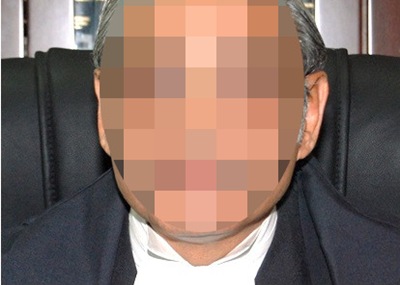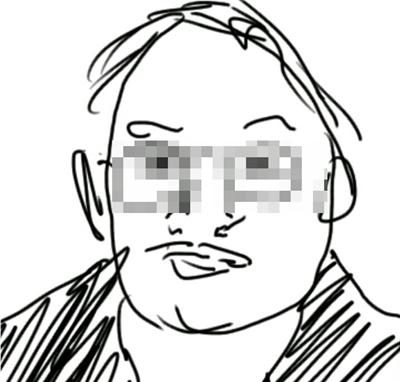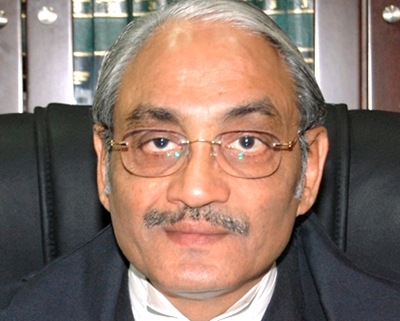
Ex-Supreme Court Justice AK Ganguly faced (unproven) allegations of a similar nature to the allegations his former brother judge, Swatanter Kumar. However, the former West Bengal Human Rights Commission chairman did not formally instruct lawyers to fight on his side. Kumar, of course, got Karanjawala and nine senior counsel to bat for him.
Media coverage around Kumar had gradually been ramping up since the story broke (for the second time, of sorts) on 10 January 2014, but it never quite reached the fever pitch and pressure surrounding Ganguly just before his resignation on the eve of a presidential reference to remove him.
I mean, frigging effigies of Ganguly were burnt outside his Kolkata office by protestors and TV cameras followed him on his morning walk in the park.
There are other differences too between the accused brother judges.
Ganguly’s former intern, apart from the odd press statement and her cooperation with the Supreme Court, was mostly responsive rather than proactive in the furore that erupted around her. Her self-professed aim in making the complaint public, under her own name, via a blog and in a later interview with Legally India, was to raise awareness that this kind of thing (allegedly) happened.
Kumar’s former intern, on the other hand, took a more traditional path, after the Supreme Court suo motu looked into the Ganguly allegations, and submitted a formal complaint to the Supreme Court; the bench promptly raised its hands in collective helplessness and said they couldn’t do anything about judges who’ve already retired.

Kumar’s former intern, with the help of senior counsel Harish Salve and Indira Jaising, and advocate Vrinda Grover, then actually filed a public interest litigation (PIL) on 14 January (anonymously, known only as X). The argument: the Supreme Court must reconsider its policy of not inquiring into the allegations against judges.
While ostensibly there should have been a lot to write about, since 17 January, after initial (alleged over-)enthusiasm for the story, there has literally been radio, TV and newspaper silence around Kumar, who continues in his post-Supreme Court-retirement job at the National Green Tribunal (unlike Ganguly, whose stint at the West Bengal Human Rights Commission was short-lived under the media’s and politicians’ glare).
The obvious reason: on 16 January, the Delhi high court had passed a temporary order in the Rs 5 crore defamation suit against the Indian Express, Times Now and CNN-IBN (and, for good measure, the anonymous intern, the Indian Express reporter and the Ministry of Information and Broadcasting).
Strategically, picking a test case before a, most likely, sympathetic Delhi high court judge was a strong move from Karanjawala: judges generally have little love lost for TV news’ (alleged) breathless rolling coverage, sometimes (allegedly) without asking the accused for comment, and newspaper stories that (allegedly) aren’t clear enough that they are just reporting allegations.
Delhi high court Justice Manmohan Singh’s 42-page interim order of 16 January, as read and reported by Legally India, then prohibited everyone from writing about Kumar, in relation to the allegations made by the intern, without also stating that they are mere allegations in a prominent place such as the headline.
However, the other central restriction of the order of, somewhat bizarrely, not publishing any photographs of Kumar, was only binding on the three defendants (the Express, Bennett Coleman and Global Broadcast News), according to our and our legal adviser’s interpretation.

When we reported and analysed the order on 17 January, we said as much and published an anonymised photo of Kumar with the story - an obvious commentary on the order.
Karanjawala then apparently took objection to that story, and possibly the photo, though they declined to ever be completely clear in their writings as to what exactly they objected to.
After several bouts of emailed legal threats and back-and-forth, I and Karanjawala, agreed to disagree, I think.
Adding to our last long response to Karanjawala of 27 January, I wrote another email asking them to “to suggest any ameliorative measures that would not impinge on our freedom to report fairly, while satisfying any reasonable concerns you may have to ensure that the administration of justice in your client's ongoing proceedings is not prejudiced”.
Karanjawala replied, on 28 January with:
In furtherance to the email sent to you yesterday, we wish to state that we have made our stand clear in the correspondence sent to you on 23.01.2014, 24.01.2014 and 27.01.2014. We reiterate the contents of our earlier correspondence. We disagree with your interpretation of the order. The order in its entirety has been brought to your attention. The order is unambiguous.
In any event you, in your correspondence, have mentioned that you have already sought legal advice. Any violation of the order would be at your risk and cost. Needless to say, this is without prejudice to the rights of our client.
Our correspondence with you on the subject rests with this communication.
Since then, the press has continued its silence around the order and allegation, except for an editorial in the Hindu by Chinmayi Arun, from NLU Delhi’s Centre for Communication Governance, who condemned the order (mirroring the Editors Guild 20 January assessment of the order as a “mockery of the rule of law”).
Admittedly, Legally India has not written much about Kumar lately either. For one, we’ve been busy, after what we thought was a fight about whether we could stand up for our legal right to publish Kumar’s photo.

I’d like to posit that Karanjawala never truly cared about the photo, pixellated or otherwise, or they would have actually spelled out that the photo was in violation of the order, rather than vaguely asking us to comply with an, at best, badly drafted John Doe gag order.
Karanjawala’s strategy is simple and is classic textbook example of gag order legal notices and SLAPPs (strategic litigation against public participation) everywhere: the legal threat is sent to you mostly to let you know that they are watching. Everything you have written and will write.
The message is that if you take a wrong step about their client, or even sometimes a right step, you’ll find yourself at the end of a law suit that is intended to be a bigger pain in the backside for you than it is to them.
Nevertheless, it seems to have been enough to muzzle pretty much every media house in a story that they should easily still be able to report on without breaching any high court orders.
The only way to win against a SLAPP is to be ready to call the bluff and duke it out in court, and to not be afraid of the potential legal costs and time you will waste defending yourself.
And to know that even if you do win, ultimately, the victory might ring hollow: three years down the road when the case against you is dismissed, no one will care about the subject you’re writing about anymore.
threads most popular
thread most upvoted
comment newest
first oldest
first
But it is possible that Manmohan is purely on the conservative side and has been aiding SLAPP-ists more often than not. Manmohan's past judgements must be studied then to look for trends. I believe he has ruled against Google USA recently and ordered take-down of Google user generated content but I can't say that he did so after establishing that published words were actually defamatory to the specific petitioner.. this was a filing by Abhishek Singhvi/Axon partners and opposed by Poovaya's firm for Google. Other similar cases might exist.
threads most popular
thread most upvoted
comment newest
first oldest
first